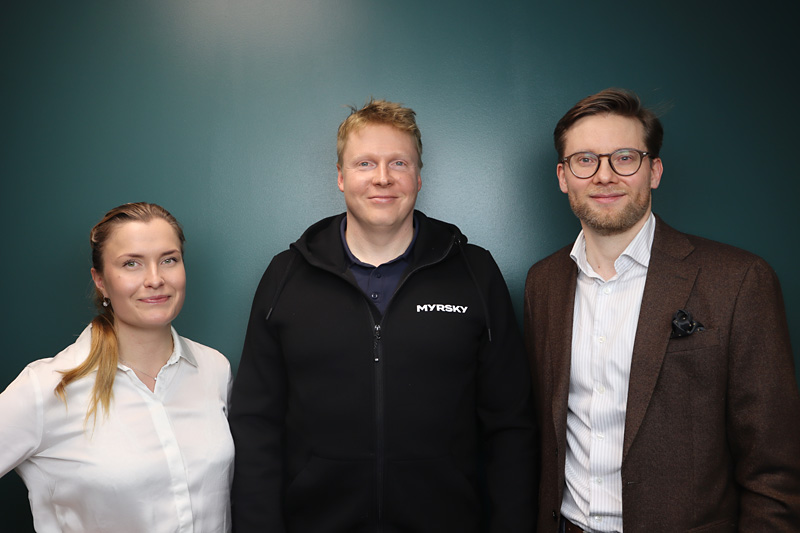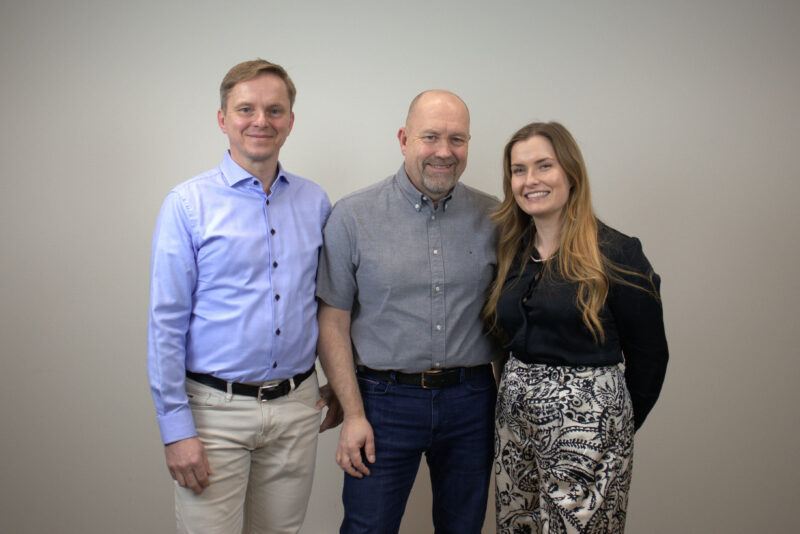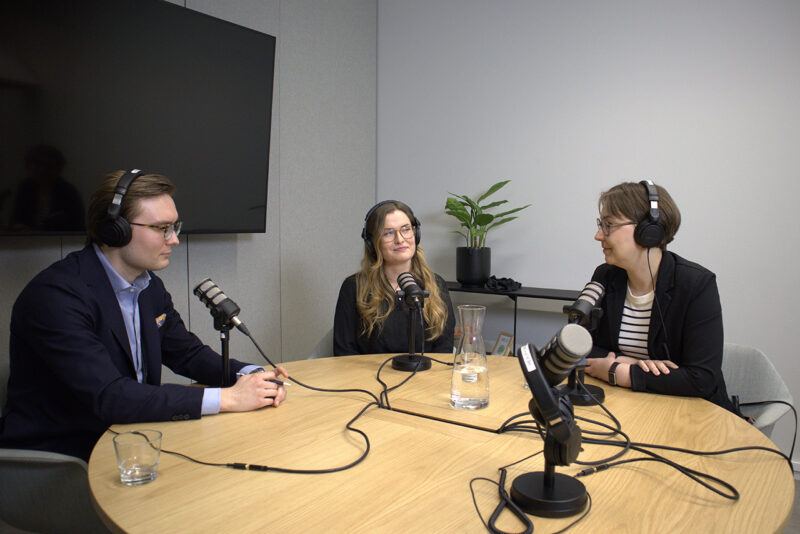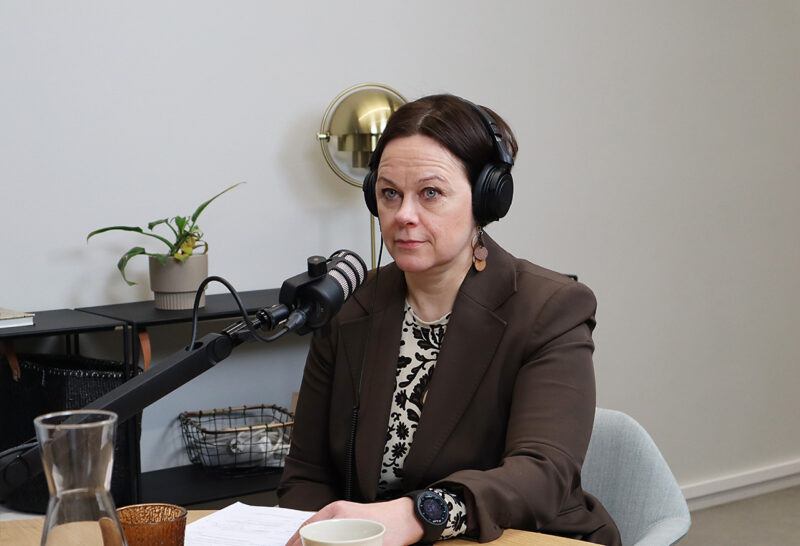Wind power and its by-products offer Finland significant financial opportunities

Tuomas Candelin-Palmqvist, the founder and chairman of the board of Myrsky Energia Oy, is a pioneer of Finnish wind power. His visionary thoughts on the possibilities of clean energy and its by-products, such as hydrogen, are worth listening to. He shares his thoughts in the following conversation together with Jussi-Pekka Kuivala, Fimpec’s Director of Energy Consulting and Maiju Hirvikallio, Fimpec’s the Director of Communications & Marketing.
This is a summary of the sixth episode of Fimpec’s “Kumppanit” podcast which discussed the possibilities of wind power and its by-products. “Kumppanit” podcast is hosted by Maiju Hirvikallio, Fimpec’s Director of Communications & Marketing. The podcast is available for listening in Finnish on Spotify.
“I see, think, and dream that Finland becomes an energy powerhouse, a massive producer of clean energy, while simultaneously creating a circular economy through our expertise, where (energy) raw materials are refined into products, such as hydrogen. I want to awaken this idea because it’s futile to resist the green transition train. It moves, it progresses, and we can give it more momentum with concrete actions. And here in Finland, we have excellent conditions to join it thanks to our northern location,” Tuomas Candelin-Palmqvist summarizes.
“It’s essential to emphasize the significance of the entire value chain so that we can maximize the benefits of the opportunities available. Finland should not only focus on producing energy but also on turning it into hydrogen and further into X-products. The significant potential lies in establishing a genuine Power-to-X economy in Finland. Now we just need courage, innovation, collaborative development, cooperation, and as many refinements as possible,” adds Jussi-Pekka Kuivala.
Finland has all the prerequisites for leveraging the green transition
Candelin-Palmqvist and Kuivala don’t limit themselves to simply envision promising future scenarios. They highlight several reasons why Finland has excellent opportunities to benefit from the green revolution if we seize them.
“From the perspective of wind power, our northern location is excellent. The Earth’s tilt generates temperature variations in northern regions, which, in turn, create pressure differences. According to the laws of physics, these tend to balance, resulting in air currents or wind. This doesn’t happen everywhere, so the conditions here are exceptionally good,” Candelin-Palmqvist explains.
Finland’s strength also lies in its large land area compared to the population, providing ample space for wind power. According to Candelin-Palmqvist, Finland also possesses the expertise needed to develop applications for green energy.
“Thanks to our education system and high-level competence, our opportunities are immensely significant from the perspective of refining this (energy) raw material. Hydrogen is one example.”
Bold and broad thinking is needed
Kuivala brings up a study from LUT University indicating that Finland could build much more wind power than it currently has. At the very least, wind power production could be tripled, and the most ambitious estimates of the potential are even over 1,000 TWh per year. Candelin-Palmqvist says that these possibilities are worth discussing.
“We shouldn’t hinder ourselves as a society by thinking too small. Let’s think boldly and broadly instead. Wind power is just one part of the palette of clean energy, but bold and even theoretical assessments of its possibilities are important from the perspective of refinement. For example, producing green hydrogen requires a tremendous amount of clean energy.”
“In a nutshell, we often think that luck or opportunity is elsewhere, not here. Shouldn’t we be bold now and use our opportunities and believe that happiness is right here?” he asks.
Candelin-Palmqvist also reminds that due to the green transition, Finland now has the opportunity to enter the energy business, which was not possible before. The significance of this opportunity is highlighted by the fact that it is the world’s largest business, which is not necessarily understood here.
“In the energy business, we’re talking about billions right away. It’s a completely different scale than Finland is used to. It’s a matter of attitude—do we want to get into such a business that can practically produce significant societal benefits?”
Wind power and the hydrogen economy go hand in hand
Candelin-Palmqvist states that wind power and hydrogen economy go hand in hand, one doesn’t exist without the other.
“Producing hydrogen requires a tremendous amount of energy. So, hydrogen doesn’t happen without a lot of energy. There must be a lot of raw material to refine it into a product,” he explains.
Investments related to the hydrogen economy haven’t widely started in Finland yet. According to Candelin-Palmqvist, there are unresolved issues, particularly in regulations, causing uncertainties from an investment perspective. However, he sees the biggest challenge as one of attitude.
“We need to understand in Finland that we can truly be the best in the world. We shouldn’t humble ourselves too much, so that we don’t miss out on luck. This opportunity is so enormous.”
Kuivala emphasizes the importance of the overall picture. He estimates that so far, wind power and the hydrogen economy have been developed separately. Now, collaborative development is needed. Candelin-Palmqvist agrees, noting a significant change in this regard.
“Previously, green transition projects were considered individual investments. Now we want to think about these things together, and the same investors are increasingly involved in both production and consumption and usage projects precisely because coordination is easier at that stage.”
Candelin-Palmqvist is not worried about Finland’s attractiveness as an investment destination. Simplifying it, he says money goes where it can be put to the best use. This means offering reliability, credibility, an appropriate risk level, and profitable investments.
“From this perspective, I’m not afraid that money won’t find Finland. The most important thing for us to consider is what we want. Do we want to be part of such energy economy? To get there, we have to boldly join in. If we start hesitating about whether Finland is the place where clean energy should be produced and refined, hesitation may lead to money going elsewhere. We need the courage to think that, yes, this is the place.”
“Kumppanit” podcast page (in Finnish)


